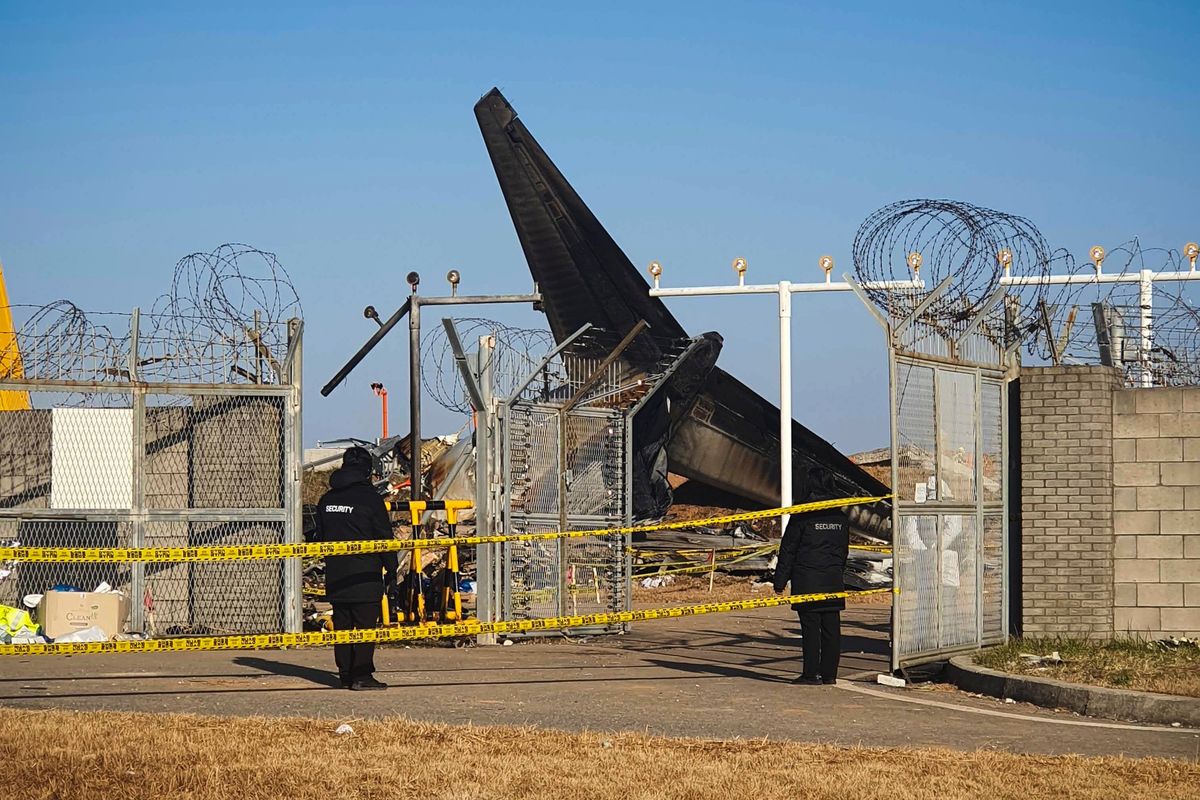New year but no end to mourning as South Korea crash victims are identified

MUAN, South Korea – It was, with little doubt, their worst New Year’s Day.
It had been three days since Jeju Air Flight 2216 crashed at South Korea’s Muan International Airport, killing all but two of the 181 people aboard. On Wednesday morning, the relatives of the dead were informed that all the bodies had been identified, according to the South Korean government.
The crash killed entire families returning from Christmas vacations in Thailand. A 3-year-old boy and his parents. Two school-age children and their mother and father. Another family lost members across three generations: a 14-year-old girl and her 9-year-old brother, along with their parents and their grandmother.
The oldest victim, a 78-year-old man from a small town 15 miles from the airport, died along with his wife, two daughters, a son-in-law and four grandchildren. The only member of the family remaining is their dog, Pudding, who had been left home with neighbors – and has no way of knowing why their humans aren’t coming home.
Lee Geun-young, the owner of a seafood restaurant a half-mile from the crash site who shot a video of the accident that has been seen widely, said Wednesday in an interview that he has replayed the crash over and over in his head. The 48-year-old’s eyes welled up when he recalled learning that small children had perished. “I married late. I have a 14-month baby at home,” he said.
At the airport the previous evening – New Year’s Eve – government officials had cleared a room at the terminal building and set up tables, photos and nameplates of the dead next to the walls, to serve as a temporary place of mourning for relatives and friends.
Around 7:30 p.m., family members were allowed in. One by one, they entered the room and were immediately overtaken with emotion as their eyes landed on the photos of their loved ones. One woman collapsed. A few screamed. Many wailed. Another woman called for her “appa,” the Korean word for “dad.”
Flight 2216 was scheduled to land at the Muan airport, on the southwestern tip of the Korean Peninsula, on Sunday morning after taking off from Bangkok. Authorities said the pilots were warned about birds in the area shortly before the plane crash-landed around 9 a.m. without its landing gear deployed, bursting into flames when it slammed into a concrete barrier.
Lee, the restaurant owner, was preparing for lunch hour when he heard booms and bangs in the sky that he said sounded like motorcycle engines – noises he had never heard in the 20 or so years that his family had been running the restaurant, located close to the runway.
Lee ran up to the roof and saw that the plane was trying to land. But there was something unusual about it, he said. It was too low and slightly tilted toward its right. The plane was soon skating across the runway before exploding in the world’s deadliest crash since Lion Air Flight 610 plunged into the Java Sea in October 2018, killing all eight crew members and 181 passengers on board.
The two survivors of the Jeju Air tragedy were crew members who were sitting at the tail end of the plane. They are in serious condition but do not have life-threatening injuries, a spokesman for Jeju Air said.
Experts say investigators probably will focus on whether the jet struck birds, why its landing gear and flaps had not extended, and why the concrete barrier was built at the end of the runway, the Washington Post reported.
Since the crash, Muan Airport has been closed to all air traffic. But the airport’s parking lot is full, while its main terminal resembles an evacuation center after a natural disaster. Hundreds of people – victims’ relatives, news crews, volunteer workers, government officials, Jeju Air and airport employees – have been huddled in the facility, sleeping on the floor and in tents and subsisting on instant noodles, cookies and gimbap, a popular grab-and-go food of seaweed sheets and rice wrapped around various fillings.
As people were leaving the airport to get some much-needed shut-eye at 10 p.m. on New Year’s Eve, Lee Jae-myung, a senior South Korean lawmaker from the country’s left-leaning Democratic Party, made a surprise visit. Almost as soon as Lee entered the terminal building, he was stopped by a grieving woman, who angrily asked why he was there.
“Go away, unless you have some answers,” the woman yelled, as a younger woman hugged her in an attempt to calm her. Lee and his aides, surrounded by bodyguards and news cameras, acquiesced and walked away.
Once Lee disappeared, the older woman wept into the arms of the younger woman, murmuring, “My poor baby, my poor baby, my poor baby.”
When the clock hit midnight, few, if any, noticed it was now 2025.
On the morning of New Year’s Day, the scorched ruins of the Boeing 737-800 lay still and silent next to the runway. A few hundred feet away, taped to an aluminum fence, was a letter that appeared to be addressed to one of the victims.
“Hey Sup,” the letter began. “We’re here. It breaks my heart to think that you were fighting for your life all alone and by yourself. You were already great and you did so well … I hope you are happy … Your big brother.”